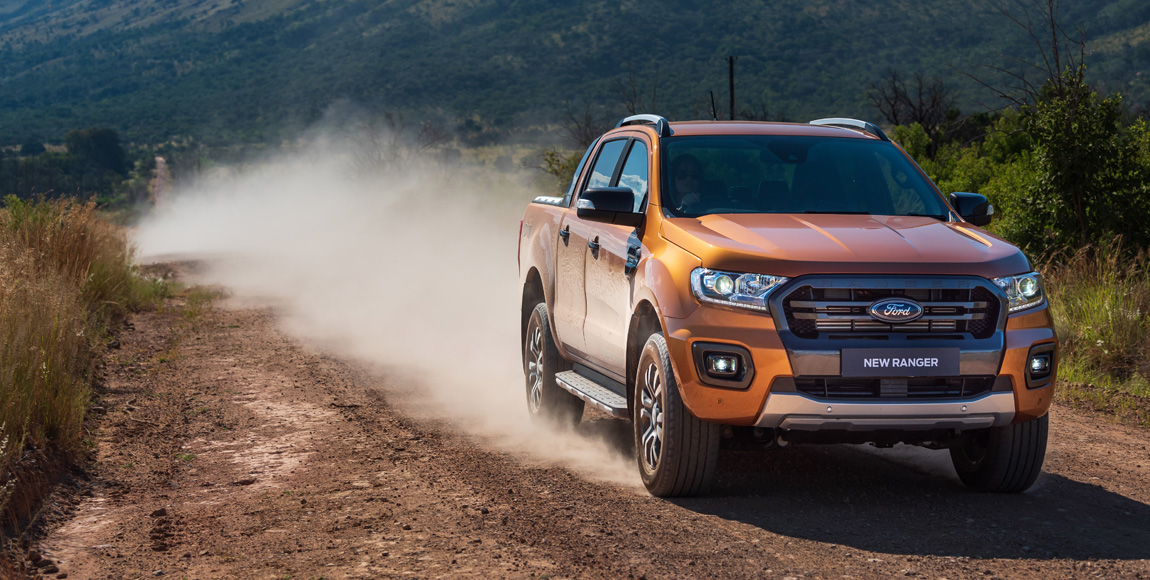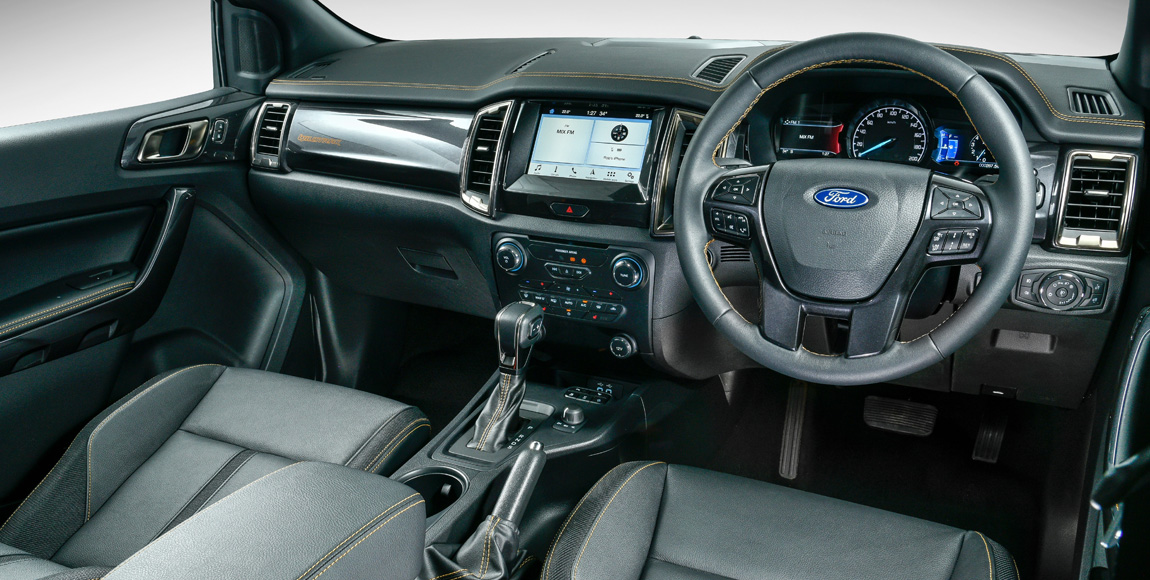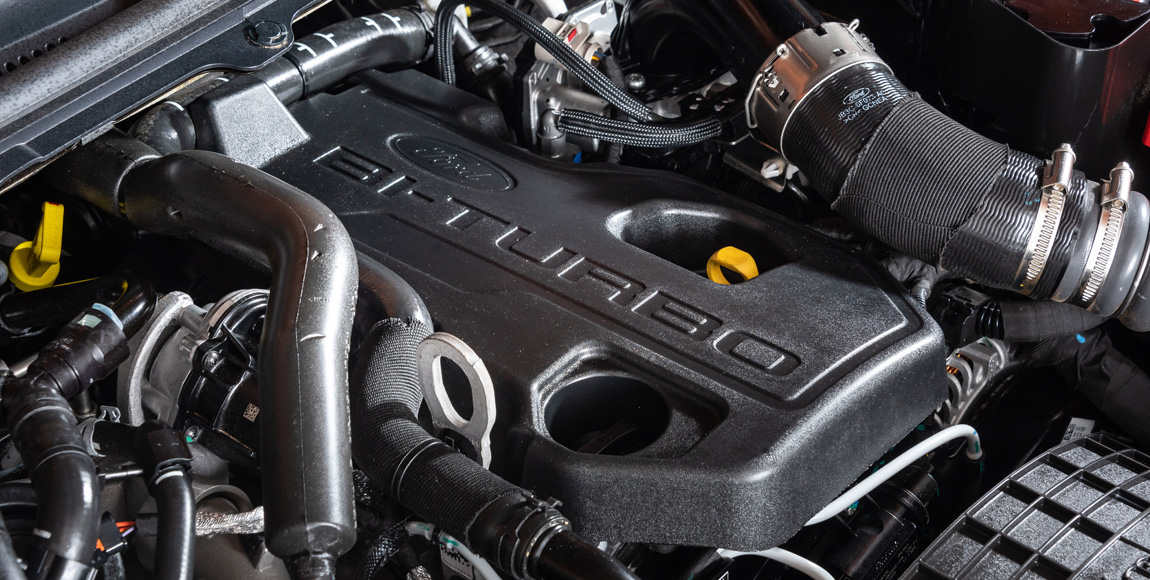Ford Ranger now with 2.0 Bi-Turbo and ten-speed auto!

With an extensive range of mechanical, technological, feature and comfort upgrades, the 2019 Ford Ranger has made its South African debut. While its looks remain familiar, having been nipped and tucked for a slightly more chiseled appearance, it’s what’s behind that refreshed façade that will surely get bakkie enthusiasts talking…
The existing engine line-up – the 3,2-litre five-cylinder Duratorq TDCi engine and the 2,2-litre TDCi in two states of tune – remains on offer, but is now complemented by an all-new 2,0-litre, four-cylinder range of turbodiesel engines.
These new engines are produced locally at Ford’s Struandale Engine Plant in Port Elizabeth and are available as the Single (SiT) and Bi-Turbo (BiT) variants.
Maximum outputs are rated at 157 kW and 500 Nm of torque from 1 750 to 2 000 r/min, for the BiT variant; and 132 kW and 420 Nm between 1 750 and 2 500 r/min for the SiT.
The BiT engine relies on a variable-geometry, high-pressure turbocharger along with a fixed-geometry low-pressure unit. The two turbochargers work in series at lower engine speeds for enhanced torque and responsiveness, while the smaller turbo is bypassed at higher speeds so that the larger turbo can provide boost to deliver high power.
Ford claims overall better performance, fuel efficiency and refinement with lower noise, vibration and harshness (NVH) levels compared to the existing engine range. The BiT engine is currently available on the range-topping Wildtrak, while the SiT engine is offered on the Double Cab XLT 4×4 and 4×2 derivatives.
The other bit of news likely to ignite conversation around the braai is that these new motors are paired with an all-new, ten-speed automatic transmission.

With a wide spread of ratios this transmission uses real-time adaptive shift-scheduling that, says Ford, allows the transmission to adapt to changing conditions and select the optimal gear for performance, fuel-efficiency or refinement in any driving scenario.
There’s also a Progressive Range Select (PRS) function with a Select Shift Transmission (SST) program that locks out selected gears from the automatic shifting range, which can be beneficial when towing, driving in slippery conditions or climbing a steep gradient, we’re told.
Ford claims the BiT engine with this gearbox will be nine-percent lighter on fuel than the current 3,2-litre TDCi and six-speed automatic gearbox.

Ford has endeavored to improve the ride and handling of the Ranger by relocating the front anti-roll bar and decreasing the front spring rates. In addition, four damper rates have been developed for the New Ranger, tuned according to the front kerb weights of the individual models.
Towing capacity (up to 3 500 kg), load capacity (up to 1 199 kg), the 800 mm water wading depth and 230 mm ground clearance remain unchanged. Ford has also equipped XLT and Wildtrak models with the EZ lift tailgate that reduces the effort required to close it by 70 percent.
XLS, XLT and Wildtrak models now receive acoustic laminated front side glass, which, with a specially designed B-pillar margin seal, reduces interior noise levels. The 2019 Ranger also sees the introduction of Active Noise Control (ANC) on the Wildtrak BiT – making it an additional five-percent quieter inside.

Other nifty new features include the Semi-Automatic Parallel Park Assist (SAPPA) – that detects and steers the vehicle into a parking space (only on Wildtrak models) – and the new keyless entry and start system (XLT and Wildtrak). The Wildtrak also now boasts HID headlamps and LED daytime running lights.
Vehicles equipped with the Sync3 infotainment system can now project real-time traffic and navigation to their vehicle via the Waze mobile app and control it through voice command. A full Category 1 Thatcham-specification alarm is now standard on all Ranger XL, XLS, XLT and Wildtrak models, complemented by a spare wheel lock across the range.
The 2019 Ranger kicks off at R287 100 with prices rising to R678 200 for the range-topping 2.0 BiT Wildtrak 10AT 4×4.
All models come standard with a four-year/120 000 km comprehensive warranty, three-year roadside assistance and five-year corrosion warranty. A six-year/90 000 km service plan is included, with 15 000 km service intervals.
Published by
Focus on Transport
focusmagsa




